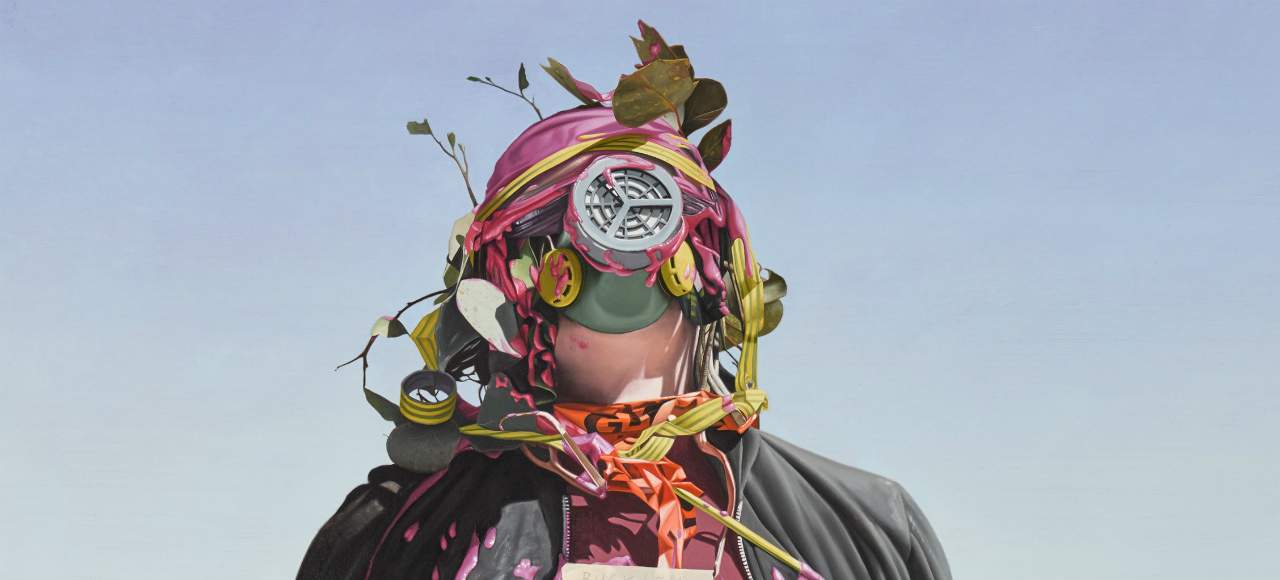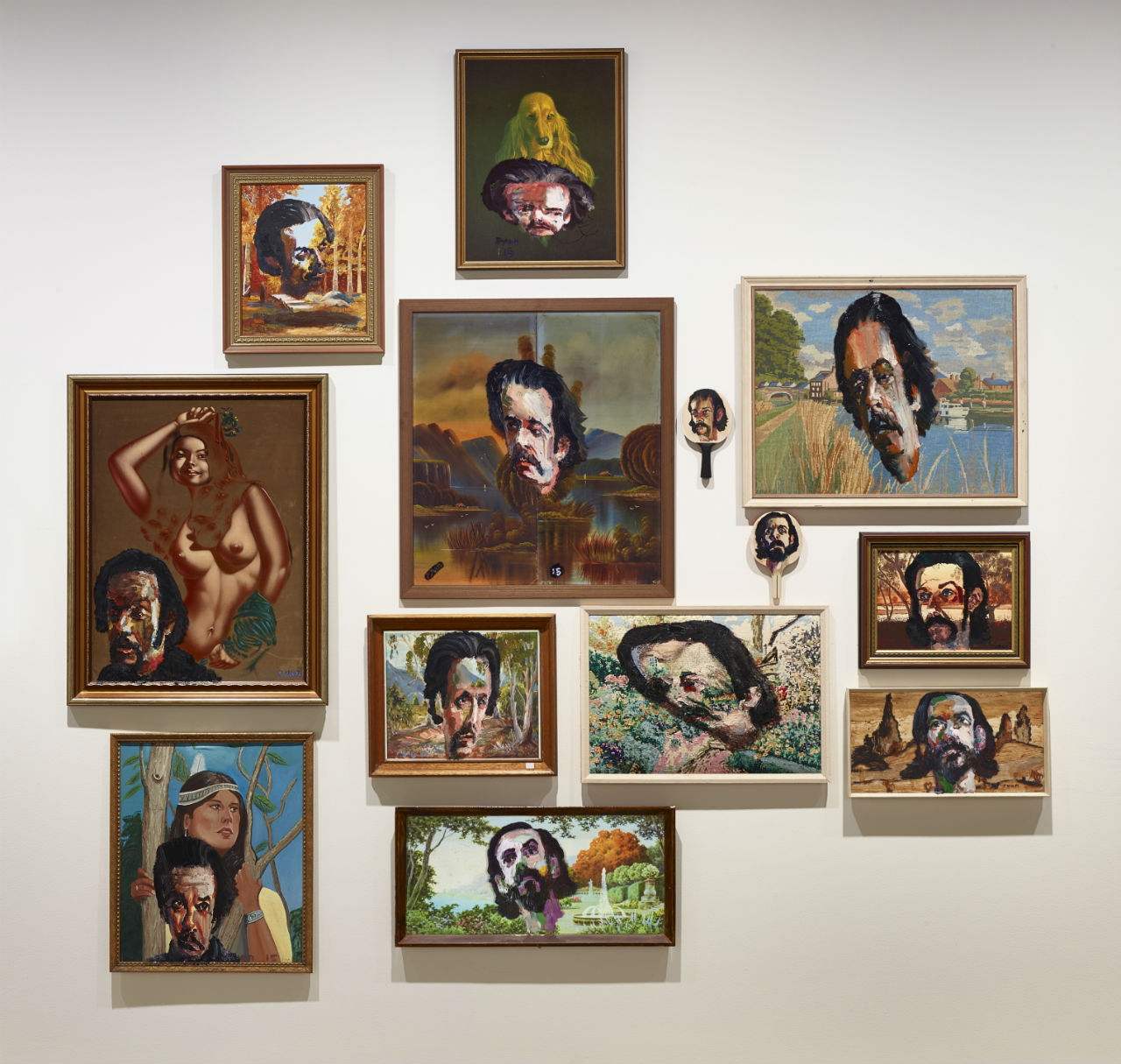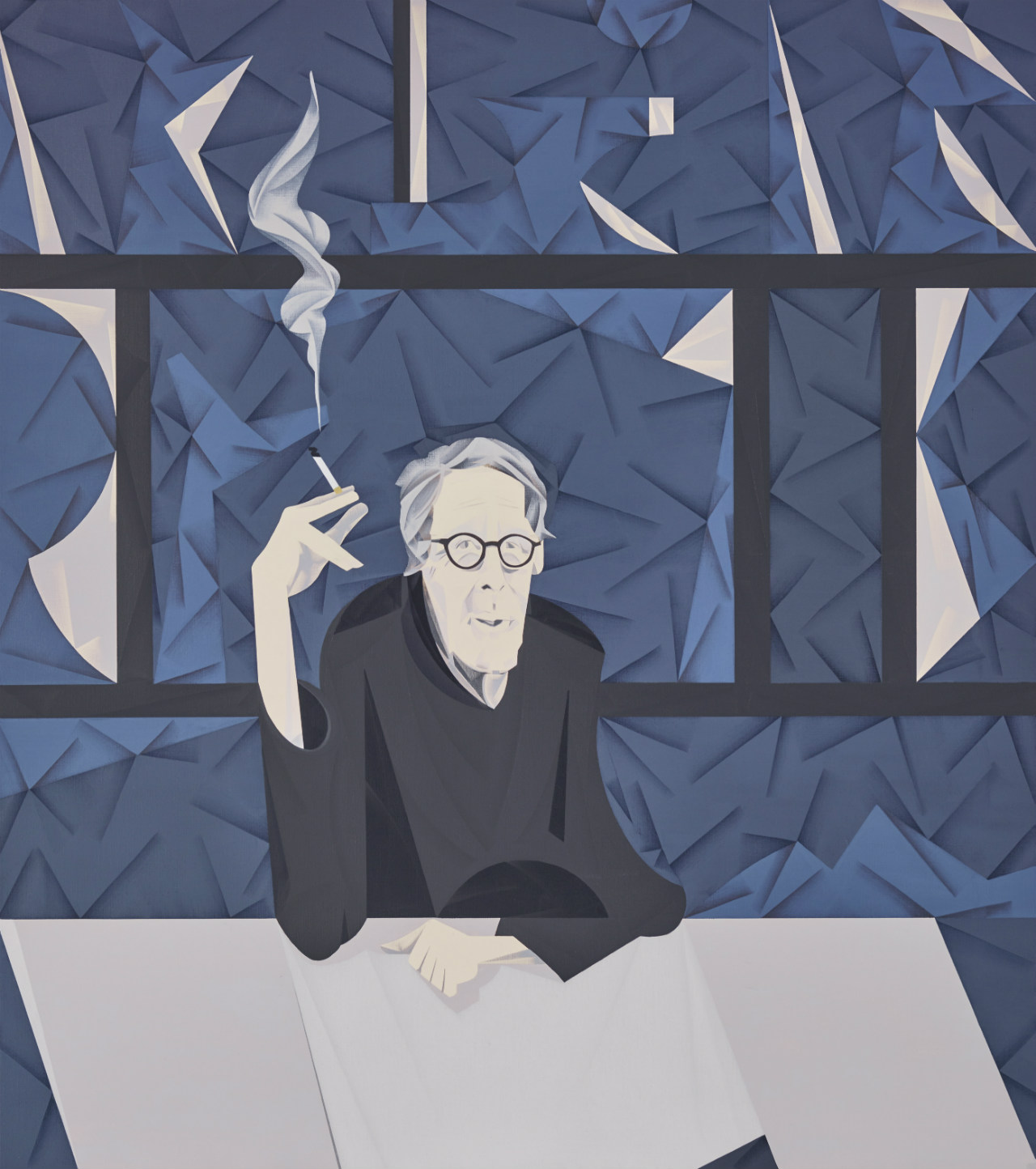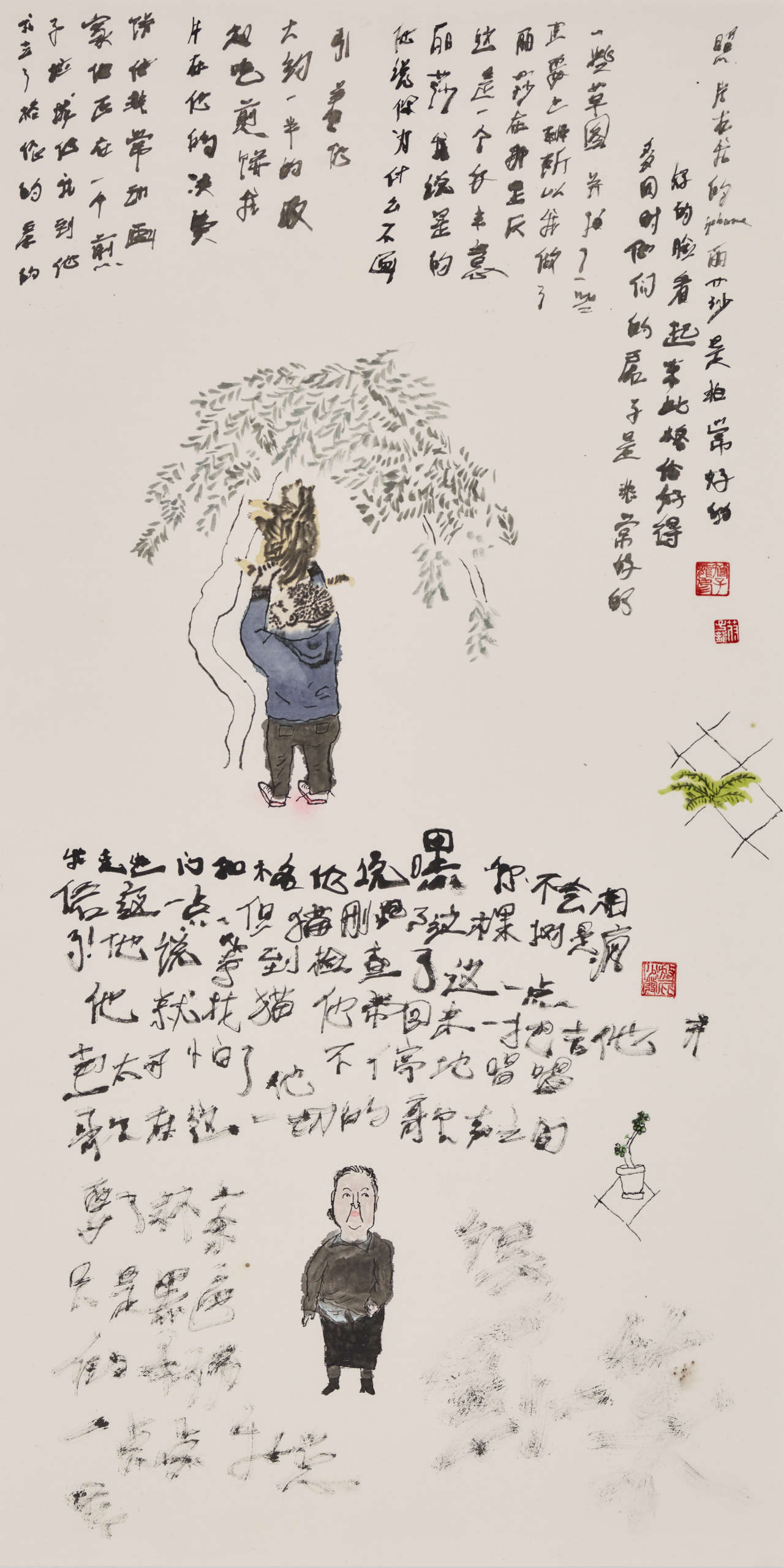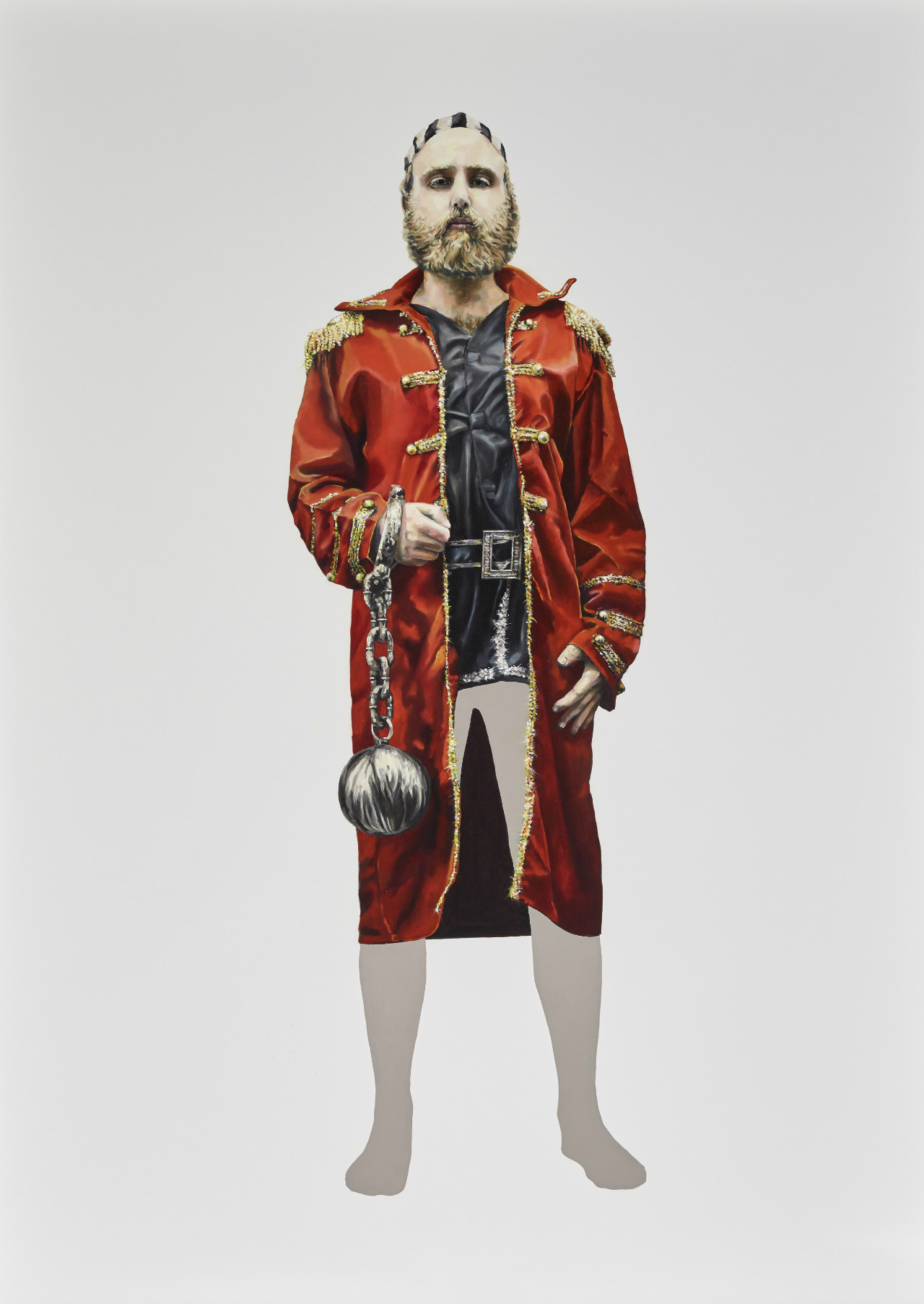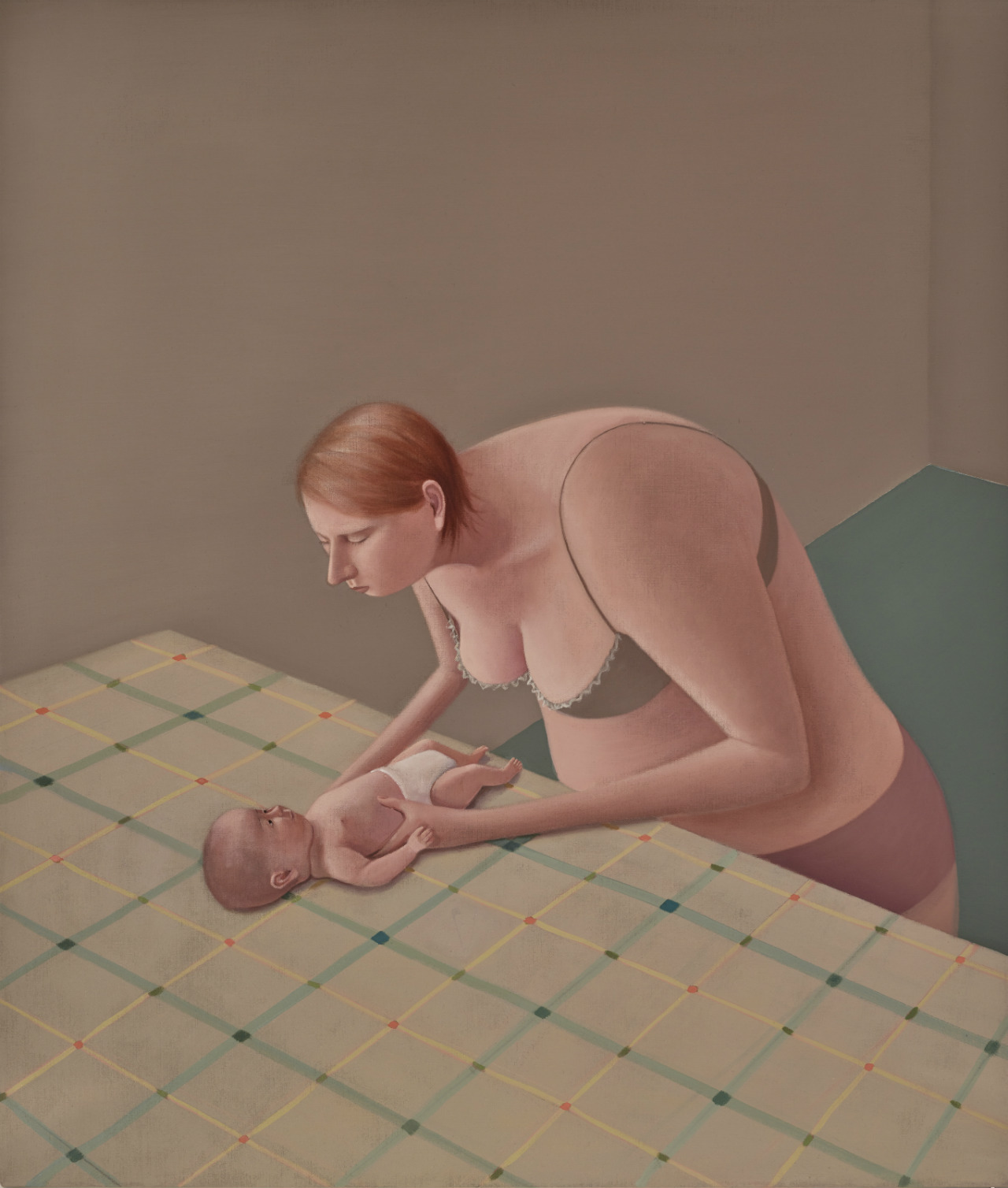Eight Unusual Takes on Portraiture by This Year’s Archibald Finalists
Archie finalists in their own words.
In partnership with
Portraits aren't all regal furs and awkward "Oh, didn't see you there," poses. Instead the genre now sees a bold, abstract lack of convention, a rebellion that runs through the Art Gallery of New South Wales' prestigious annual Archibald Prize exhibition, currently showing.
Capturing a realistic, unrelentingly vulnerable likeness of your own reflection, someone you've just met or one of your oldest buds takes a fair few stories, maybe a few beers and a willingness to tackle the intimidating notion of thinking up something new after decades of Archie winners. At the risk of sounding like an HSC essay opener, the final image isn't the whole story. Here's eight of the Archibald finalists making us wake up and pay attention (whether for great or WTF reasons) to Australia's big ol' faces — as told to the Gallery in their own words.
PAUL RYAN — THIRTEEN NOAHS
Paul Ryan raided quite a few junk shops — and his own early work collection — to paint over these existing curiosities with Australian actor Noah Taylor's face.
"I grew up watching Noah on the big and small screen. He is a similar age to me and it has been interesting to see him age and his acting skills develop, as I have also aged and developed as an artist," says Ryan. ‘With these works, I am painting Noah as a fictional character in fictional films. There is Noah the mysterious figure in Murders at the lake, Noah as a black American pimp in Hawaiian hustle, Noah in the Australian classic Death on the Murray, and Noah in Outback wanderer.
"I met him through Olsen Irwin gallery who represent us both. Our relationship was born of a mutual respect for each other’s work. As I did successive studies and hung them at random on the studio wall, the idea of what to do for this year’s Archibald was born. Noah’s face is so interesting it practically paints itself. I painted more than the 13 studies that make up this piece, and spent a few days playing with different combinations."
SOPHIA HEWSON — DELIVERED
Paying tribute to different methods of pornography, Sophia Hewson's confronting self portrait came from one of her Melbourne public performance works.
"I was using my body in this work to try to open up a dialogue on female self-objectification (when a woman intentionally sexually objectifies herself). Sometimes I think self-objectification can be constructive. It can be used to claim back ownership of the body or to assert: "I can exhibit my sexuality without it amounting to my sexual availability"."
"Other times I think it can reflect the way the patriarchal value system has been internalised. But I don’t feel you can expect a woman, who has unconsciously internalised 'male' values, to see herself as a space where something has been lost. A new identity needs to be forged. I’m interested in this because I’m struggling with it myself. I have difficulty navigating the contradictions and differentiating between internal and external influences, but I see self-portraiture as a potent site for negotiating identity."
JUAN FORD — A BUNGLED CLAIRVOYANCE
The full title of Juan Ford’s self-portrait is: A bungled clairvoyance of William Buckley or Ludwig Leichhardt’s most intense moments (I can’t decide which, you choose). Attempted while atop a mountain. Phew.
"Making straightforward portraits is something that bores me a bit," says Ford. "Sometimes boring is fine, but right now I feel adventurous. Take Ludwig Leichhardt, the Prussian explorer who disappeared mysteriously in the Australian interior. Idealistic and adventurous, he wandered off, never to be seen again. By all reports he went quite unprepared. Or William Buckley. An escaped convict, he lived for over 30 years with the Wathaurong people on the Bellarine Peninsula. He later married a woman so short she couldn’t loop her arm through his when they went for an evening stroll. What a character.
"When I try to imagine such mythic men, I make a mess of it, applying my own conventions, thus misunderstanding them utterly. To do so on a mountaintop compounds the problem. But I like to get out into wilderness; it’s where many of my ideas come from. It helps me feel I’m insignificant in the grand scheme. I can’t hope to understand Australia: it’s too vast and unknowable. Buckley and Leichhardt signify this unknowability."
MITCH CAIRNS — PETER POWDITCH
The runner-up for the 2015 Archibald Prize, Mitch Cairn's portrait of renowned painter Peter Powditch takes the whole thing full circle — Powditch was the winner of the 1972 Sulman Prize.
"I was drawn to the idea of painting Peter after attending the recent Pop to popism exhibition at the Art Gallery of New South Wales. The inclusion of Powditch’s Seascape II 1969 to my mind reaffirmed the significance of his work,’ says Cairns. ‘In general, Peter’s work is characterised by a directness of purpose, exemplary draftsmanship and an incisive approach to painting problems. He is an unapologetic image-maker.
"On accepting my invitation to sit, I spent a couple of days with Peter making drawings at his home and studio on the NSW North Coast. For this portrait, I chose to paint him in his studio. It had been raining heavily during my visit so the room was quite dark. We had a great conversation about his most recent assemblages. The beauty found and pleasure taken in the discovery of shape, here in the assemblages and also reminiscent of Seascape II, were the starting point of this painting."
JASON PHU — LISA HAS A MUCH MORE PLEASANT FACE THAN GLENN...
With Carriageworks director Lisa Havilah the subject of this strange portrait, the full title of Jason Phu’s painting is: Lisa has a much more pleasant face than Glenn. She also doesn’t sing horribly while playing a guitar or try to put a cat up a tree while I’m painting her.
"I wanted to paint Noel but he hates doing that stuff," says Phu. "Lin was too busy with his footy schedule. Guan wasn’t in the country. So I had to settle for painting [curator] Glenn Barkley. Luckily while Glenn was distracted with showing me how much his cat loved climbing trees (which it definitely didn’t), Lisa was there so I painted her instead. Anyway, Lisa is much more prestigious in the arts and is also a lovely person.
"I never really wanted to become an artist. I’ve always wanted to be a cartoonist, doing the Sunday comic strips, but I’ve been too scared to pursue it. In high school I decided I’d like to do engineering. I’ve always had a penchant for building little mechanical toys, but I didn’t have the marks to do engineering. So I had to do fine arts. It’s been all right and I’ve enjoyed it but I see myself becoming a chef in the not-too-distant future."
SALLY ROSS — EVA
This gorgeous portrait of Academy and Emmy Award-winning documentary filmmaker Eva Orner (Taxi to the Dark Side) wouldn't be out of place on the cover of Frankie. But there's nothing twee about this kickass human rights crusader, whose upcoming Australian-focused doco Asylum is sure to ruffle a few feathers.
"I met Eva Orner through our mutual association with HAGAR Australia, an organisation working with survivors of trafficking and abuse in Afghanistan, Vietnam and Cambodia. I instinctively knew I wanted to paint her — I was struck by Eva’s sheer unselfconscious drive and her large black spectacles,’ says Ross.
"In our image-saturated world I would love to see less selfies, gourmet meals, renovations and lingerie models blowing kisses, and more pictures of women, humans like Eva Orner," she says. "After an art-binge in Holland earlier this year, my head was filled with mysterious early Flemish portraiture. I wanted to work within a flat, almost dull palette and contrast a certain restraint with decorative motifs in Eva’s distinctive robe made by Afghan architect/designer Rahim Walizada.’
TIM GREGORY — SELF PORTRAIT AS ANCESTORS
Putting Australia's muddled national identity on show, Tim Gregory describes this self-portrait as ‘a response to the confused, prosaic and performed nature of white Australia’.
"European painting in Australia was founded by convicts who were themselves forgers, producing replicas of a landscape and life, which were facsimiles of European fantasies. In the main, this tradition continues," he says. "The combination of the redcoat and the convict is not about my own personal heritage, but more broadly about how many Australians still view themselves – as both larrikin/underdog and defender. The costumes I wear are eroticised reconstitutions of colonial history from a sexy costume store. They are in no way authentic, but held together by velcro and tassels, ready to be ripped off after the obligatory role-play of identity.
"The painting is deliberately superficial: shiny, saturated, decontextualised. White painters (particularly male painters) in Australia, and the white Australian population more broadly, cannot contribute in any significant way to cultural, political or social evolution until we acknowledge that we are still a colonial country, absurdly and violently layered on top of the world’s oldest, continuous culture."
PRUDENCE FLINT — BABY
Writer Urszula Dawkins, who is not a mother, has been Prudence Flint's closest friend for 30 years.
"When we first met she was a singer in a band. She began writing fiction in the nineties and has become a frequent lone traveller to Arctic Europe. We have supported each other in our unconventional life choices, balancing the demands of our creative lives and questioning social expectations.
"The idea for the work came after seeing the late Gothic paintings of the Madonna and child in the Musée de Petit Palais, Avignon. I related to the ambivalence and the unnerving fierceness in the gestures between the mother and child," says Flint. "I wanted to paint Urszula with baby to show how the presence of motherhood is in our lives, whatever choices we make, like a parallel world. The painting began as a tiny sketch and I tried to keep it true to the tension between the monstrous and the tender. It felt like a delicate radiation area between beauty and repulsion that was tricky to paint."
See the Archibald Prize at the Art Gallery of New South Wales until September 27. For more info or to book tickets, head over here.
